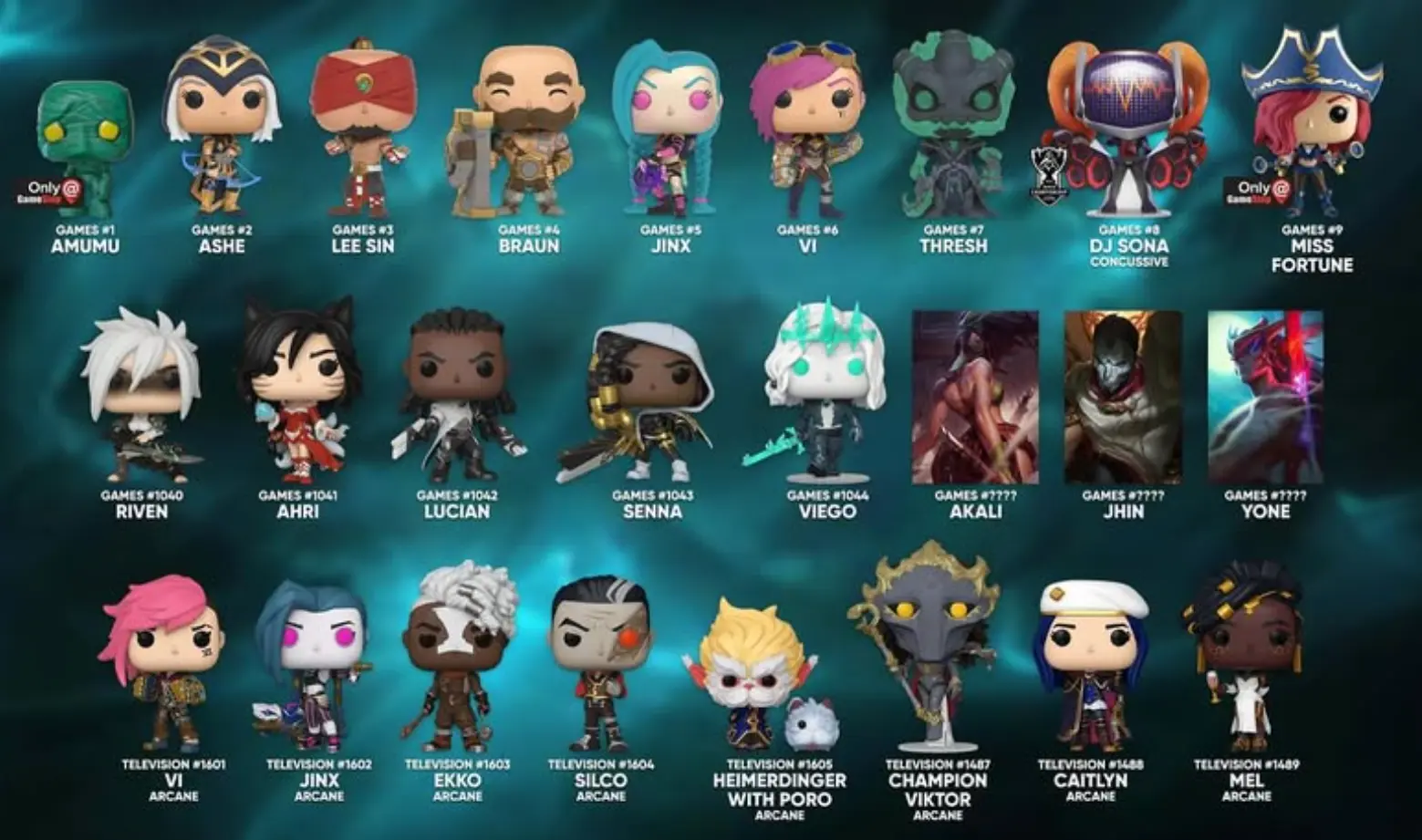Bottom Line Up Front: League of Legends has become Funko's most ambitious gaming franchise, with 25+ figures spanning from classic champions to Arcane's breakout stars, creating a collector ecosystem worth millions. Check out the full Arcane collection here here.
The Numbers Game
This image reveals the scope of Funko's League commitment: 17 distinct figures ranging from Games #1 (Amumu) to Television #1609 (Mel), spanning multiple product lines and years of releases. The numbering system tells a story - early Games series figures like Amumu, Ashe, and Lee Sin established the foundation, while the recent Television series captures Arcane's cultural moment.
Exclusivity Wars
Target's red-dot exclusives dominate the landscape with Ammu, DJ Sona, and Miss Fortune, while GameStop claimed key champions. This retailer warfare created artificial scarcity that drove secondary market prices into triple digits for certain figures.
The Arcane Effect
The bottom row represents Funko's masterpiece - the Arcane Television series. These aren't just repaints of existing champions; they're completely new sculpts capturing the show's distinctive art style. Jinx's pink shimmer eyes and Viktor's towering Champion form represent technical achievements rarely seen in standard Pop releases.
Design Evolution
Early figures suffer from "static syndrome" - basic poses with minimal accessories. Compare Amumu's simple bandaged appearance to Thresh's elaborate hook and lantern setup, or Viktor's mechanical complexity. Funko clearly learned that League champions demand dynamic presentation.

Missing Legends
Notably absent are Yasuo, Zed, and Katarina - champions with massive player bases but no Funko representation. This suggests either licensing complications or strategic release timing, creating speculation about future waves.
Market Dynamics
The Games vs Television numbering split reveals Funko's strategy shift. Games series focuses on iconic champions appealing to players, while Television targets mainstream audiences drawn by Netflix's success. This dual approach maximizes both collector and casual buyer segments.
Production Mysteries
Three figures show "Games #????" numbering (Akali, Jhin, Yone), indicating either placeholder status or unreleased announcements. This suggests more League content in development, keeping collectors engaged through speculation.
Cultural Impact
From Amumu's simple design to Arcane's cinematic quality, this collection documents League's evolution from niche MOBA to pop culture phenomenon. Each figure represents not just a character, but a moment in gaming history - making this arguably Funko's most significant gaming franchise.
The League of Legends Funko line proves that video game adaptations can transcend their source material, creating collectibles that appeal to gamers, show watchers, and Funko enthusiasts alike.
